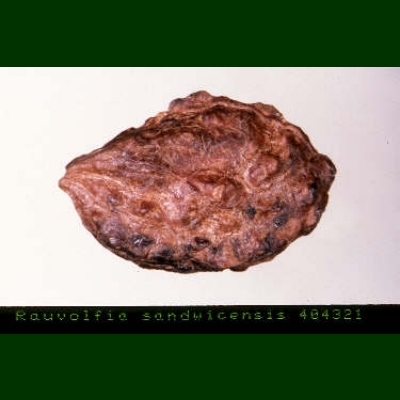 Hawaiian Name(s): hao
Hawaiian Name(s): haoScientific Name: Rauvolfia sandwicensis
Vernacular Name: none
Family: Apocynaceae
Status: endemic
Authority: A.DC.
Description: Tree to shrub.
Habitat R. sandwicensis is most commly found on ridges, slopes, gulches of mesic forest between 100–500 m; occasionally in low, open dry areas (Wagner et al. 1990:220–221).
Medicines:
Non Medicinal Uses: Little & Skomen (1989:280) state that the wood was "not used by the Hawaiians for fuel because the smoke was thought to be poisonous, nor for charcoal because it burned completely to ashes. It was however, considered a good wood for construction." Yet Malo states: "..hao and others…are "no doubt" used for fuel (Malo 1951:22–23). Hao often found at heiau, thought by some to have religious significance (Lamb 1980:118). In the Ethnology Collection at Bishop Museum there is a post-contact example of the wood made into a bowl.
Specific gravity of wood: unknown
Famous Locations:
Mele:
`Ōlelo Noeau:
Dye Color and Parts:
Kino lau:
Location on Bishop Museum Kalihi Campus:
Propagation Information: Easy. Germination occurs in 4 weeks or more, seedling growth is rapid (5 cm/month); once it reaches 20-30 cm tall it should be outplanted (Culliney and Koebele 1999:59–61).
Native Plants Hawaii.
Seed: Seed length approximately 4.5 mm. Photograph: H.Lennstrom.

Microscopy
Cross Section: Field of view: 2.6 mm x 1.6 mm. Photograph: H.Lennstrom.

Radial Section: Field of view: 2.6 mm x 1.6 mm. Photograph: H.Lennstrom.

Tangential Section: Field of view: 2.6 mm x 1.6 mm. Photograph: H.Lennstrom.

